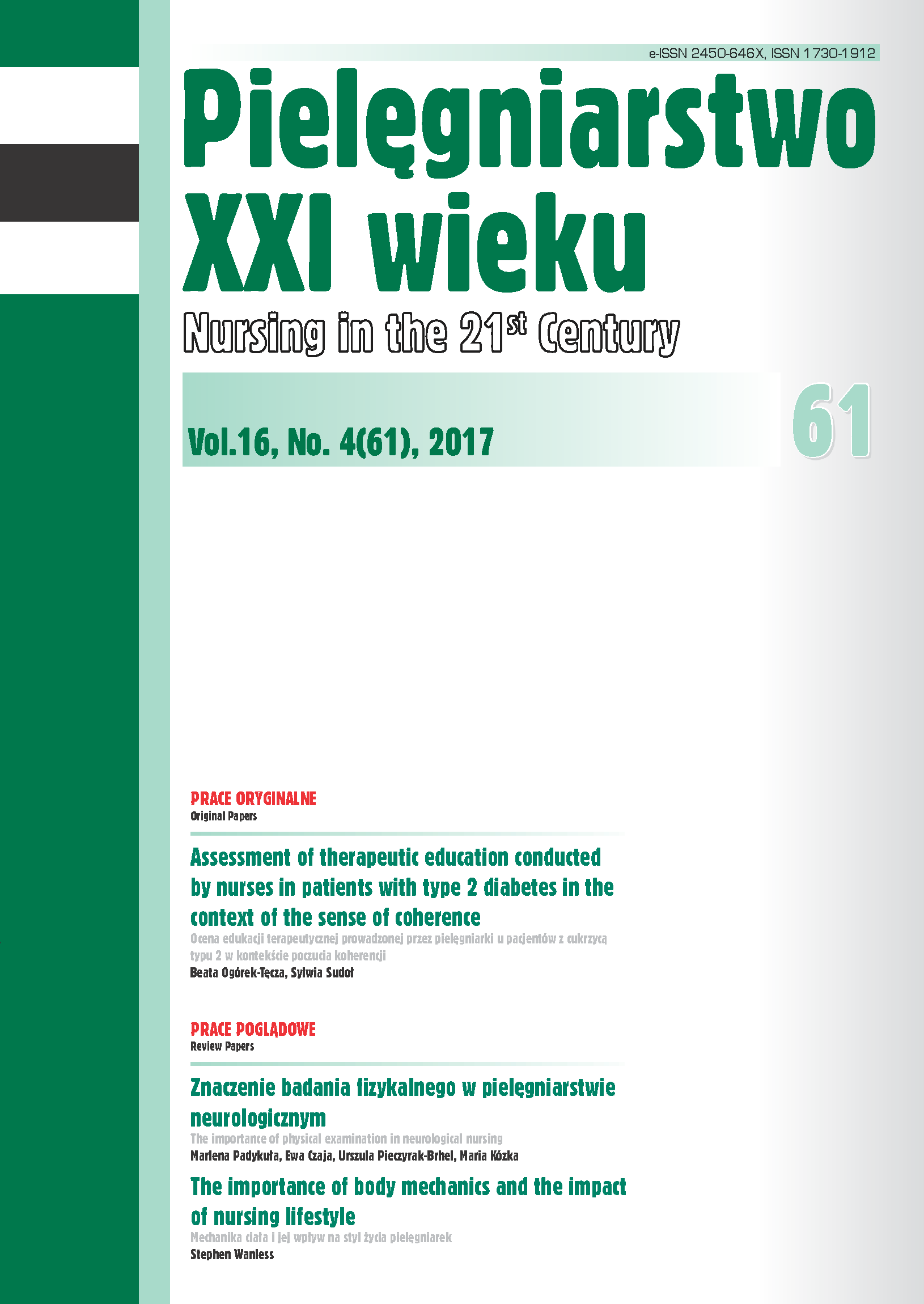Diagnostic tests in women attempting pregnancy
DOI:
https://doi.org/10.1515/pielxxiw-2017-0032Keywords:
infertility, diagnostics, gynaecological examination, hormonal profileAbstract
DIAGNOSTIC TESTS IN WOMEN ATTEMPTING PREGNANCY
Introduction. Diagnosis of infertility usually begins after a year of waiting for pregnancy without any effect. Although it is usually woman who first reports to the doctor, the diagnostic tests should be conducted simultaneously with a woman and a man.
Aim. The aim of the study was to evaluate the diagnostic tests performed in women seeking an offspring.
Material and methods. The survey was conducted from February to April 2014 in the gynaecological wards of the Gynaecology and Obstetrics Clinical Hospital of the Karol Marcinkowski University of Medical Sciences in Poznan. The study included 104 patients during diagnosis and treatment of infertility. The research tool was the author’s questionnaire.
Results. The largest group comprised of women aged from 31 to 35 years (44%), the least numerous group – of women under 25 years of age (1%). The most commonly proposed trial was a detailed obstetric interview together with the general one (64%), then gynaecological examination (36%) and transvaginal ultrasound (30%). In 96% of the respondents diagnostic tests included conducted medical history, as well as physical gynaecological and ultrasound examination. Diagnostic methods, like hormonal profile, assessment of ovulation, laboratory tests were performed in 70% of patients. The survey also included questions concerning the diagnostic methods used in the partners of the respondents. In 35% of men one diagnostic test was performed, in 34% two tests and in more than 10% – 4 tests.
Conclusion. Those who decide for the diagnosis of infertility are usually couples aged from 26 to 30 who do not an have offspring. Medical history, physical examination, gynaecological ultrasound and hormonal profile are the most commonly performed diagnostic tests for women applying for posterity.
References
1. Łepecka-Klusek C, Pilewska-Kozak A, Jakiel G. Niepłodność w świetle definicji choroby podanej przez WHO. Medycyna Ogólna i Nauki o Zdrowiu. 2012;18,2,163-166.
2. Kuczyński W, Kurzawa R, Oszukowski P, i wsp. Rekomendacje dotyczące diagnostyki i leczenia niepłodności. Ginekologia Polska, 2012, 83, 149-154.
3. Szamatowicz M. Niepłodność. [w:] Położnictwo i ginekologia. Tom 2. red. Bręborowicz GH. Warszawa: PZWL;2007, s.737-739.
4. Gordon JD, Rydfors J, Druzin M, i wsp. Podstawy niepłodności. [w:] Położnictwo, ginekologia i niepłodność. Podręcznik klinicysty. Warszawa: Medipage; 2011, s. 522-524.
5. Czyszewicz A, Grudowska J, Florjański J. Poziom wiedzy na temat płodności i jej zaburzeń - badanie ankietowe studentek sześciu wrocławskich uczelni. Piel. Zdr. Publ. 2015;5(3):223-229.
6. Pawelczyk L, Korman M. Profilaktyka niepłodności. [w:] Leczenie niepłodności. red. Putowski L. Wrocław: MedPharm Polska; 2011:13-23.
7. Opala T, Woźniak J, Rabiega D, Rzymski P. Epidemiologia i metody diagnostyczne. [w:] Ginekologia Podręcznik dla położnych, pielęgniarek i fizjoterapeutów. red. Opala T. Warszawa: Wydawnictwo Lekarskie PZWL; 2006, s. 133-137.
8. Bączkowski T, Kurzwa R. Leczenie niepłodności w warunkach ambulatoryjnych. Family Medicine & Primary Care Review. 2013;15(3):435-437.
9. Sokalska A, Pawelczyk L. Badanie niepłodnej pary. [w:] Niepłodność i rozród wspomagany. red. Radwan J. Poznań: Termedia; 2005, s. 27-33.
10. Stańczak J, Stelmach K, Urbanowicz M. Małżeństwa oraz dzietność w Polsce. GUS, Departament Badań Demograficznych i Rynku Pracy. Warszawa; 2016, s. 1-14.
11. Wołczyński S, Kuczyński W, Pawelczyk L, i wsp. Diagnostyka i leczenie niepłodności. Ginekologia po Dyplomie. Medical Tribune. 2011;13(2):59-88.
Published
Issue
Section
License
Copyright (c) 2017 Authors

This work is licensed under a Creative Commons Attribution-NonCommercial-NoDerivatives 3.0 Unported License.




